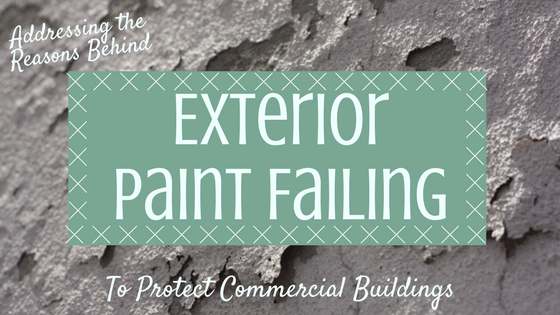
Exterior paint failing to properly protect surfaces can facilitate water infiltration, which is the primary culprit behind many problems in buildings.
Since the causes of water ingress can vary widely especially in the hot and humid weather of Florida, it can be very difficult to locate the source of the problem and protect a commercial building from water damage.
Furthermore, prolonged exposure to high moisture levels, strong winds and intense sunlight combined with salt air and pollution can accelerate the normal weathering process. This may lead to exterior paint failing to provide the expected level of protection for the period of time specified.
Now, let’s go through a few more factors that could cause early paint failure in Florida:
-
Thermal Expansion and Contraction
Significant temperature variations cause building materials to expand and contract. Besides the fact that some materials have higher thermal expansion coefficients, the wall finishing materials that are exposed to direct sunlight tend to expand more than the materials beneath exterior siding.
Additionally, direct solar radiation and heat, implicitly, degrade the binders, pigments and additives in coating systems, which is why exterior paint fades over time and loses its ability to expand and contract according to fluctuations in temperature.
All these will eventually cause the coating system to crack, which is often followed by exterior paint failing to properly protect the structure.
-
Incompatible Materials
Understanding the function of the building envelope is key to selecting the right materials for each commercial painting project.
However, a series of compatibility issues can appear between substrates, sealants, primers and coatings, and contribute to exterior paint failing to efficiently protect a building.
To prevent compatibility problems, commercial painting contractors must ensure the materials are compatible with each other and the substrate.
-
Poor Design
Commercial buildings typically have multiple wall transitions, terminations, doors and windows, which create openings in the building envelope. When these elements aren’t sealed correctly, they leave the entire building susceptible to water infiltration and potential damage.
To avoid water-related damage, good moisture control practices must be considered from project inception. The design team should specify all the elements necessary for the moisture accumulated in the building and the water resulting from rain and landscape irrigation systems to evaporate or flow down and away from the structure.
In addition to a properly designed drainage system, specifying the right sealants and coatings, and developing a storm water management plan can help avoid water damage in a commercial facility.
As an example, sealing all the transitions and terminations of wall systems as well as the joints between walls and components like door/window frames and flashings can keep water and moisture out of your building.
As well, opting for drainable EIFS that incorporate drainage systems and air/water-resistive barriers will allow any moisture accumulated inside to evaporate back into the atmosphere without passing through water-resistive barriers.
Waterproofing yet breathable paint systems can also be used to stop water from getting into wall assemblies, without hindering the evaporation of internal moisture.
-
Incorrect Specifications
The specifications of a commercial painting project must take into account all the weather elements.
For a commercial facility in Florida, for instance, commercial painting contractors should specify waterproofing coating systems that are able to withstand major fluctuations in surface temperatures, which can range from 52°F to 150°F.
Now that you know all these details, you can prevent many of the problems that might arise from exterior paint failing to protect your most valuable asset. To learn more about how to protect your building against the harsh weather conditions in Florida, please contact Performance Painting Contractors at (904)-641-4800 or (813)-308-0388.






